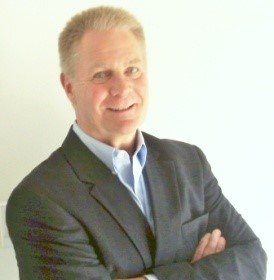In your case specifically, Phil, having bone-on-bone in your meniscus, a squatting pattern can still be achieved. A lot of the intensity or the vibration from running, or something like that, is probably going to hurt a little bit more. To get you to find out what your depth would be, we would test you in a functional movement pattern like a squat and see how low you can go before that knee pain starts to give you a little bit of a warning sign. Then, at that point, we’re going to be able to know, this is going to be your squat range for right now.
I always say for right now, because it’s been amazing the change that can occur, even with bone-on-bone meniscus and the various issues that our audience may experience. It’s amazing to see the ability of the body to adapt and change over time.
Phil Faris: Besides the lunge and the squat patterns, what other assessments do you do to help make sure people will exercise effectively and efficiently?
Mark Palmieri: In the aging process, we’re looking at a lot of mobility stuff. I’ve become very interested, and I guess you could say borderline obsessed with posture. My clients all know that. They know that I’m a very specific coach on posture. One of the other assessments that we use is an arm mobility test that looks at your upper body arm mobility. You mentioned a lot of boomers may be making trips to the ER, and the shoulder area is one of the common areas that are very prone to injury. With the arm mobility assessment, we can find out how high, or how far overhead, somebody can push.
Let’s just say; it’s related to doing household chores where you have to reach up to get certain things. Overhead pressing motion is an important thing that we need to be able to do because we do lose some arm mobility with age. But, without an assessment to find that out, and just to jump right into a workout, you can run into some problems. The upper body arm mobility assessment is probably one of the bigger ones that I focus on.
There’s also an impingement test that I’ll do just to clear any lower back issues people might have. Some of our boomers might be familiar with the cobra pose in yoga. It’s lying down and putting your hands in almost a push-up position, and then very slowly allowing your chest to come off the ground while you’re leaving your hips down and assessing for back pain. We look to see if there is any massive pain right there. If there is, we tend to avoid some lower back stuff for a little bit until we get that checked out by a doctor. It’s amazing how well people move without pain when they’re coached properly to do it in an assessment. If we see pain-free movement, then we can move on to the more traditional, I guess a little bit more fun topic.
Phil Faris: It seems like what you’re doing with the assessment is one, you’re looking for areas of pain, which can be like a red flag. The other is a limitation in mobility, as well as effective mobility. This lets you know what clients can and can’t do before you start prescribing a specific exercise or exercise program. Is that accurate?
Mark Palmieri: Yes. That’s a perfect summary. I can’t beat that.
Phil Faris: For people to understand your enthusiasm and commitment to fitness, share a little bit on how you got started in this industry 11 years ago. How did you get started?
Mark Palmieri: I’ve always been athletic by nature. I think that’s how a lot of trainers end up starting. One of the things of happened to me is, I’ve always really been interested in the concept of body building. I was a smaller kid, and I thought that it was a cool concept or a unique concept, that you could exercise and change the way your body looked. I hate to say it, but originally, I was very looks-oriented. I was very looks-motivated because I didn’t have to be the scrawny guy anymore. I could have a muscular physique. So then, I started to read a little bit, and I started lifting when I was a freshman in high school.
One of the things that influenced my career happened when I was a sophomore in high school. I was in a strength conditioning class, and strong at that point, and there was a test day. People can always relate to that, a test day. Whether it’s the mile run, or in this case, a squat day. This can be relatable, whether it’s a young person or an older person because we’re all pretty competitive. The thing that I did was, I put way too much weight on the bar, the form wasn’t coached that well, and I ended up hurting my back.
Down the road, I found out that it was considered spinal stenosis, which some of our boomers are probably dealing with, a narrowing of the spinal column. I was told my spine was the same as that of an 89-year-old. I was like, “Wow. That’s interesting.” It was due to just bad form. So, I became very interested in form. I didn’t think about it before. Unfortunately, it takes us getting injured to think about that. I became very interested in that and did a lot of research. I went to college as a business major, because I thought that’s what you were supposed to do. I was talked out of it by one of my instructors, and ended up changing my major at the end of my freshman year to exercise science, and have never looked back. An injury to myself is what started the process of learning how to coach myself, and then other people after that.

